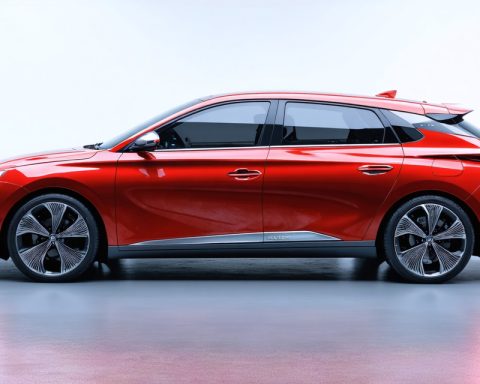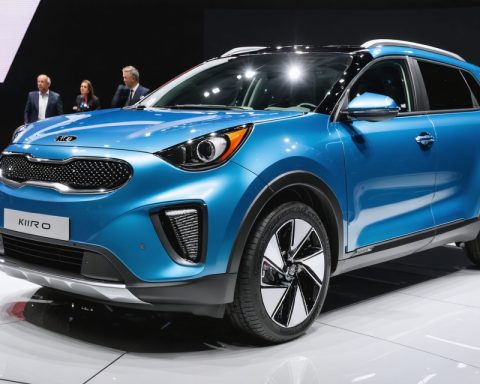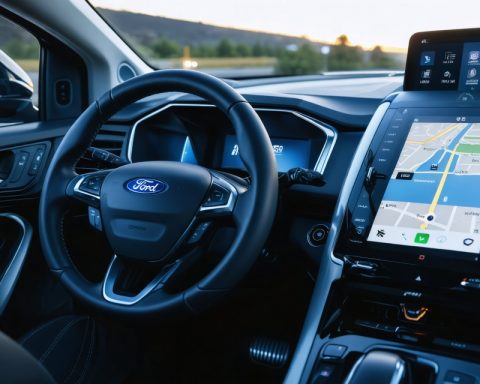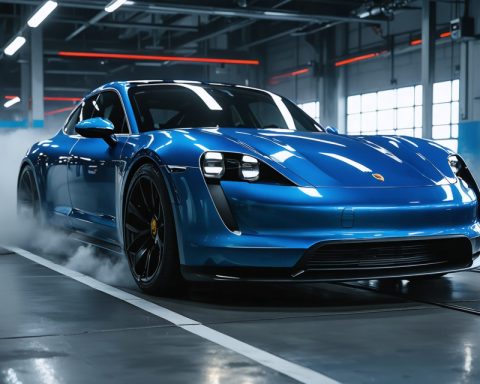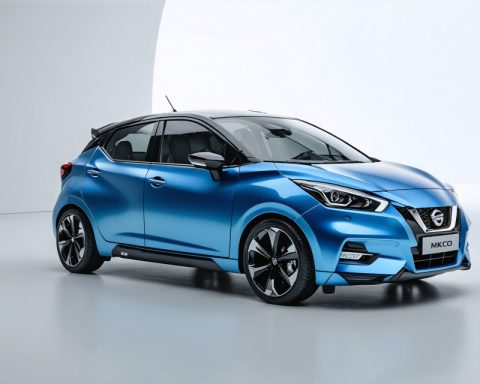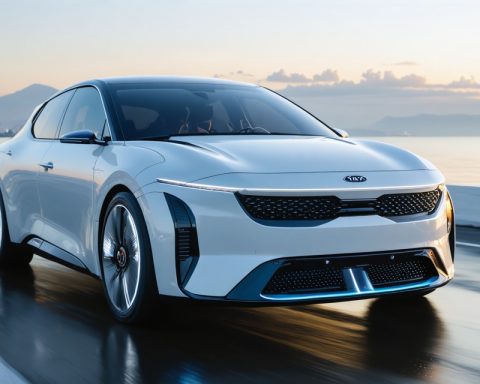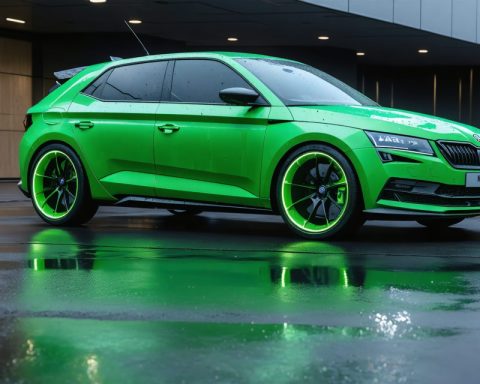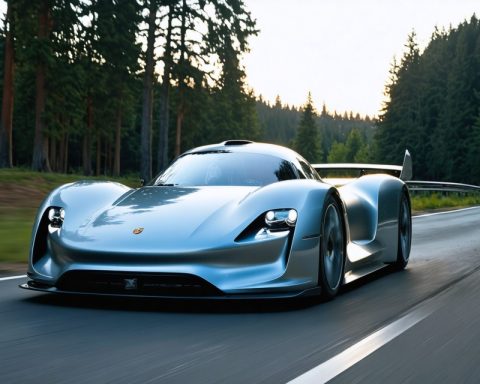- Electric vehicles (EVs) are becoming highly desirable among American drivers, especially those aged 18-25, with 72% of prospective buyers considering them for their next purchase.
- The EV market has expanded significantly due to environmental concerns and evolving consumer preferences, shifting from a niche interest to mainstream appeal.
- The introduction of the first electric muscle car illustrates EVs’ integration into diverse automotive categories, merging tradition with innovation.
- Consumer satisfaction is high, with 55% pleased by the increasing variety of available EVs, supported by growing infrastructure like charging stations.
- Generational differences exist, as enthusiasm for EVs is lower among older demographics, highlighting varied adoption rates.
- International interest varies, with Japan showing less inclination toward EV adoption, underscoring cultural and infrastructure differences.
Gleaming in the morning sun, electric cars are no longer merely the conveyance of the future but the aspiration of today’s drivers. In a dramatic departure from the fumes of combustion engines, Americans are accelerating towards an electrified revolution. The shift isn’t just about sleek design and futuristic appeal—though there’s plenty of that—but an enduring commitment to change the way we travel.
Over recent years, the appetite for electric vehicles (EVs) has grown voraciously, stealthily driven by environmental consciousness and a dramatic evolution in consumer desires. Once the domain of tech-savvy and eco-conscious pioneers, EVs are now captivating a broader market, with 72% of prospective American car buyers eyeing them as their next automotive adventure, according to a revealing study by Tata Consultancy Services.
The quiet seduction of the EV doesn’t end with its whispering engine and zero tailpipe emissions. Younger Americans, those navigating the world between 18 and 25 years old, are particularly enamored. An impressive 42% declare they’re ‘very likely’ to make their next vehicle an EV. It’s not just idealism; it’s a generational statement, a seatbelt-fastened commitment to a cleaner, greener future.
Even the quintessential muscle car, once defined by its engine roar, has electrified its essence. Last year marked a historic milestone with the unveiling of the world’s first EV muscle car, encapsulating the power of innovation alongside speed.
The landscape of consumer satisfaction reflects this electrifying trend, with 55% expressing contentment over the burgeoning variety of electric models now crowding the roads. This satisfaction signals not just acceptance but a warm embrace of what’s to come. Roadside recharge stations are proliferating, sunny states are hustling to solar-charge every mile, and even ice-locked regions are plugging in as battery technology surmounts cold-weather challenges.
Yet, as with any paradigm shift, nuances thrive within the broader picture. Age demographics illustrate a diminishing propensity to drive change among older generations. For those between 46 and 55 years, enthusiasm wanes; merely 20% feel ‘very likely’ to plug in for their next purchase. The American road trip is evolving, but not everyone’s strapped in—at least not without a little hesitation.
American drivers are not alone in this venture; however, the same electric whisper echoes less strikingly across oceans. Japan, the land of technology giants, harbors just 31% likelihood towards an electric choice among its drivers, a stark contrast highlighting cultural and infrastructural variances.
This growing infatuation with electric vehicles doesn’t merely illuminate the darkened highways; it heralds a boundless possibility—a cleaner earth, a quieter ride, a more technologically integrated world. As the gears shift and engines quiet, the message is clear: the allure of electric is here to stay. The road awaits, silent and serene, ready for the next generation of travelers to chart a sustainable course.
Unlocking the Future: Why Electric Vehicles Are Driving the Automotive Revolution
Introduction
Electric vehicles (EVs) have swiftly transitioned from futuristic concepts to the front line of green transportation. With technological advancements and growing environmental awareness, the EV market is experiencing unprecedented growth. This article delves into overlooked aspects of this revolution, offering insights, trends, and actionable tips for both consumers and industry participants.
Market Forecasts & Industry Trends
1. Rapid Market Growth: The global EV market is expected to grow at a CAGR of 26.8% from 2021 to 2030 (Allied Market Research). This growth is driven by governmental incentives, consumer demand for sustainable transportation, and advancements in battery technology.
2. Battery Technology: Solid-state batteries are on the horizon, promising higher energy density and faster charging times. Companies like Toyota and QuantumScape are at the forefront of this innovation.
3. Charging Infrastructure Development: The expansion of the charging network continues to be critical. Governments worldwide are investing in public charging stations, with the U.S. aiming for 500,000 chargers nationwide by 2030.
4. Role of Renewable Energy: Sunny states like California are integrating solar energy with EV charging stations, enhancing the sustainability factor of electric cars.
Insights & Predictions
– Cross-Generational Appeal: While younger generations are leading the charge towards EV adoption, outreach and education could increase interest among older demographics.
– Global Market Comparisons: The difference in EV adoption rates between countries like the U.S. and Japan underscores the impact of cultural values and government policies on consumer behavior.
Real-World Use Cases
– Commercial Applications: Companies like Amazon and UPS are deploying electric delivery vans to reduce operational costs and meet sustainability targets.
– Ride-Sharing and Rentals: Services like Uber and Lyft are pledging to be fully electric by 2030, setting examples for the ride-share industry.
Pros & Cons Overview
Pros:
– Environmental Benefits: Zero tailpipe emissions significantly reduce pollution.
– Cost Savings: Lower fuel and maintenance costs contribute to long-term savings for EV owners.
– Performance: Electric motors provide instant torque, offering superior acceleration.
Cons:
– Upfront Cost: Although decreasing, the initial purchase price of EVs can be higher than traditional vehicles.
– Range Anxiety: Despite advancements, some consumers remain concerned about battery range.
How-To Steps & Life Hacks for Prospective EV Buyers
1. Research Incentives: Check federal and state rebates that can significantly lower purchase costs.
2. Test Drive: Experience the unique driving feel of an EV to determine if it suits your lifestyle.
3. Evaluate Charging Options: Consider home charging installation and the proximity of public stations.
Conclusion: Actionable Recommendations
– For Consumers: Stay informed about the latest EV models and technology advancements. Take advantage of incentives and rebates to make the transition economically feasible.
– For Policy Makers: Continue to support charging infrastructure development and offer incentives that drive adoption across all demographics.
For more information on sustainable transportation and EV developments, visit Tesla or Nissan. Embrace the electric revolution today—it’s not just about the vehicle; it’s about driving forward into a cleaner, more sustainable future.



